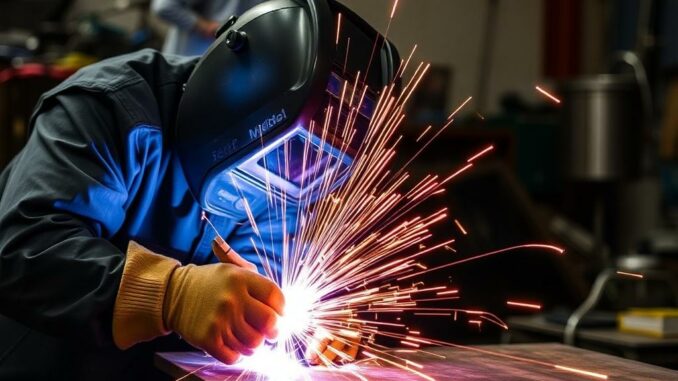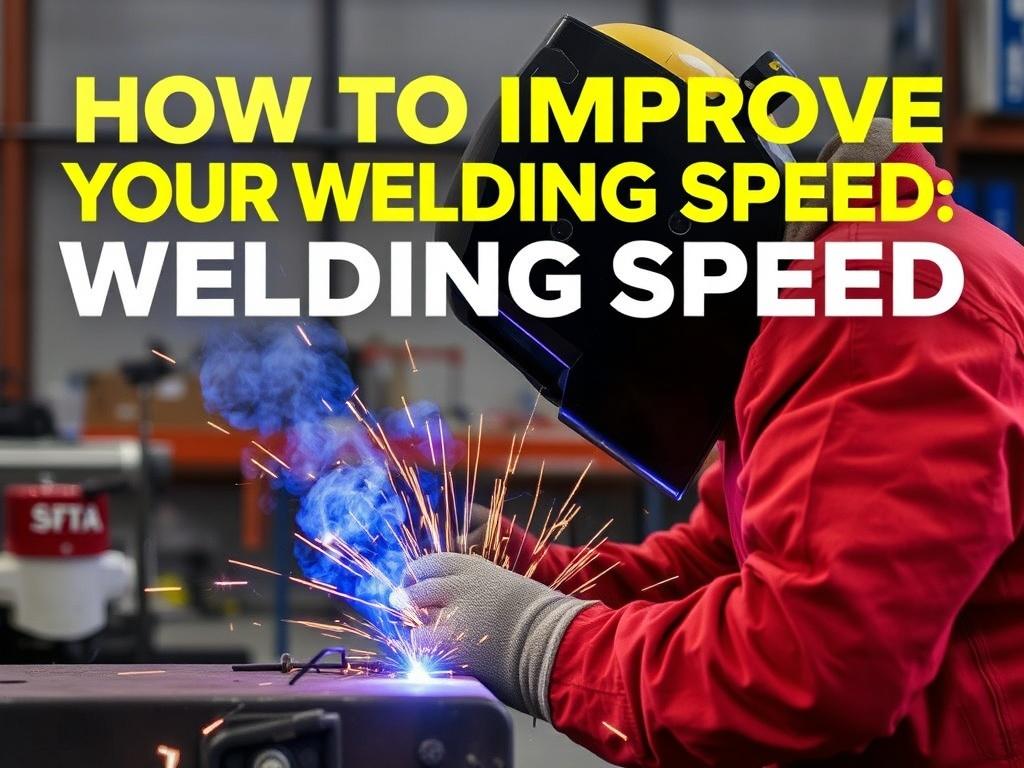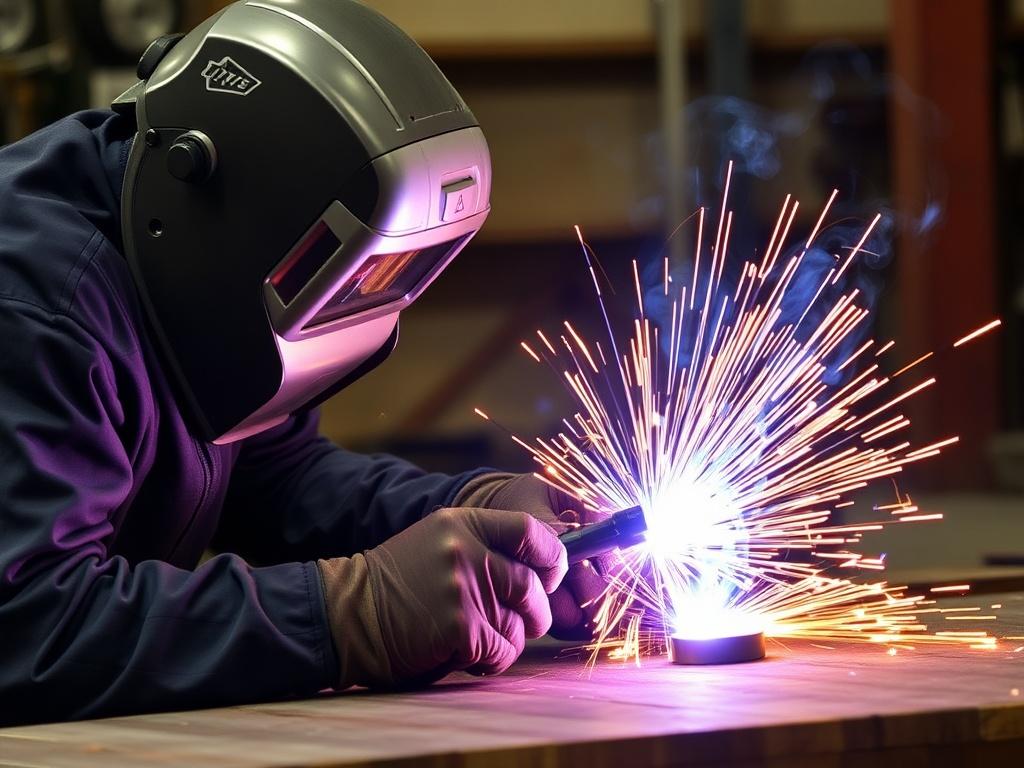
Welding is both an art and a science. When you’re on the job, there’s always a balance to strike between speed and quality. Nobody wants to spend hours on a welding project, but rushing through it can compromise the strength and safety of the final product. So, the million-dollar question is: how do you improve your welding speed without sacrificing quality? In this comprehensive guide, we’ll explore practical strategies, useful tips, and professional insights that will help every welder—from beginner to expert—work faster and better.
Whether you’re welding thin sheets or thick structural steel, using MIG, TIG, or stick welding, this article dives deep into the techniques you need to master. No jargon-heavy explanations, just straightforward advice you can apply immediately to your welding practice.
Understanding the Importance of Welding Speed and Quality

Before we get into the “how,” let’s pause to understand why both speed and quality are essential in welding. Welding speed affects productivity—if you weld slowly, projects will take longer, potentially driving up labor costs and delivery times. On the other hand, quality is non-negotiable because poor welds can lead to structural failure, safety hazards, and expensive rework.
A high-speed welding job that results in poor quality is essentially a waste of time. Similarly, an excellently crafted weld that takes forever to complete might not be sustainable in a fast-paced work environment. That’s why improving welding speed without sacrificing quality is a hallmark of a skilled welder.
The Relationship Between Welding Speed and Weld Quality
Welding speed and quality have an inverse relationship if not properly managed. Go too fast, and you run the risk of incomplete fusion, porosity, or poor bead appearance. Go too slow, and you might cause excessive heat input that weakens the material or causes distortion. Finding the balance requires understanding your equipment, your materials, and your technique.
In the end, welding speed must be optimized while maintaining consistent penetration, proper bead shape, and minimal defects. This balance doesn’t come from luck—it comes from practice, preparation, and knowledge.
Preparation: The Foundation of Fast and Quality Welding
One key secret to welding faster without losing quality lies in preparation. Like any skilled craft, the better you prepare your materials and workspace, the more efficient and effective your work will be.
1. Material Preparation
Clean the workpieces thoroughly to remove rust, oil, paint, and other contaminants. Contaminants cause defects such as porosity and slag inclusions, which require rewelding—costing you time. Using a wire brush or grinder to clean the edges before welding makes the process smoother and the weld stronger.
Properly fit and secure your workpieces using clamps or fixtures. A well-aligned joint helps produce a uniform weld bead quickly without the need for constant adjustment.
2. Equipment Check and Setup
Before starting, double-check your welding machine settings. Creating a cheat sheet or preset for different metal thicknesses and processes will guarantee consistency. This prevents the need to stop and adjust settings mid-job.
Make sure all your tools are ready and in good condition—electrodes, welding wires, nozzles, and shielding gases. Worn or defective consumables can disrupt your weld and force you to stop frequently to replace them.
Techniques to Boost Welding Speed While Maintaining Quality
Once preparation is spot-on, it’s time to focus on the actual welding techniques and strategies that allow for faster, yet high-quality welds.
1. Optimize Travel Speed
Travel speed is the rate at which the electrode or filler material moves along the joint. Finding the right travel speed depends on your welding process and materials. Moving too quickly can result in poor fusion or cold laps, while moving too slowly may cause excessive heat input and warpage.
Practice maintaining a steady, optimal travel speed to produce uniform weld beads. You might find that setting a metronome or counting rhythm while welding helps develop consistent pacing.
2. Use the Right Welding Technique
Different welding processes (MIG, TIG, Stick) have their own ideal techniques to maximize speed without giving up quality.
- MIG Welding: Use a push technique rather than pull for better penetration and faster welds.
- TIG Welding: Master the whipping or circling technique that allows you to weld quickly without overheating the metal.
- Stick Welding: Utilize a stringer bead when possible to move faster, instead of weaving, which takes more time.
3. Keep a Steady Hand and Consistent Arc Length
A steady hand is a hallmark of an experienced welder. Maintain a consistent arc length—the distance between the electrode and the base metal—to ensure optimal heat input. Too long an arc causes spatter and poor penetration; too short causes sticking and contamination. Steady hands and concentration improve speed and quality simultaneously.
4. Use Multi-Pass Welding Strategically
For thick materials, multi-pass welding is unavoidable. However, planning your passes strategically to prioritize speed without compromising weld integrity can save time. For instance, use faster stringer beads for root passes and weaving for caps to combine speed with aesthetics and strength.
The Role of Equipment in Welding Efficiency
Your welding machine and accessories play a crucial role in how fast and well you can weld. Investing time in selecting the best equipment and maintaining it properly can make all the difference.
Choosing the Right Welding Machine
Modern welding machines come with advanced features such as adjustable inductance, pulse control, and synergic settings that help beginners run faster while maintaining weld quality. For example, a MIG machine with pulse MIG capability can reduce heat input and allow for faster travel speeds on thin metals.
Besides the process, match your welding machine’s output to your material thickness and project requirements to avoid wasting time on multiple cuttings or corrections.
Consumables and Their Impact on Speed and Quality
Using the right electrodes, wires, and shielding gases tailored to the project can speed up welding time. For example, some proprietary welding wires offer smoother feeding, reducing stoppages, and some shielding gases improve arc stability, making welding easier and faster.
Table: Common Consumables and Their Benefits
| Consumable | Benefits | Best For |
|---|---|---|
| ER70S-6 Wire | Good wetting, stable arc, low spatter | General steel welding, thicker materials |
| Lincoln Super ARC Electrodes | Fast-freeze arc, easy slag removal | Stick welding, repair and construction |
| Argon-CO2 Shielding Gas Mix | Stable arc, improved weld bead appearance | MIG welding mild steel, thin to medium thickness |
Practical Tips to Enhance Welding Speed Without Cutting Corners
Improving welding speed practically means adopting habits and patterns that bring measurable efficiency gains. Here are some of the most effective tips to accelerate your welding without compromising the strength and look of your welds.
Tip 1: Organize Your Workspace
Cluttered work areas slow you down. Make sure your cables, gas tanks, grinders, helmets, and clamps are arranged logically so you can reach them easily without interrupting your flow. Spending time looking for tools is time lost.
Tip 2: Practice Makes Perfect
This might sound obvious, but consistent practice is the best way to develop natural speed with quality. Set daily welding goals, focus on improving travel speed, and monitor your bead quality to chart your improvements.
Tip 3: Learn and Use Jigs and Fixtures
Jigs and fixtures not only secure your parts but also save time on measuring and aligning repeatedly, reducing errors that lead to rework. Investing in custom jigs for regular job types pays off quickly.
Tip 4: Minimize Welding Starts and Stops
Frequent starts and stops slow you down and can cause weak points in the weld. Plan your weld beads to be as continuous as possible. If you must stop, use proper techniques to restart cleanly and maintain weld integrity.
Tip 5: Keep Your Skills Updated
Welding technology evolves continuously. Stay updated on new consumables, techniques, and machine settings by attending workshops, certification courses, or online webinars that focus on efficiency and quality advancements.
Common Mistakes That Slow You Down and Lower Weld Quality
Sometimes, the biggest obstacles to welding faster with quality are bad habits. Avoiding these common errors will improve your workflow and weld results.
- Lack of Proper Joint Preparation: Neglecting cleaning or fitting causes defects and slows down progress.
- Incorrect Machine Settings: Using wrong voltage, wire speed, or gas flow rate leads to stops and starts to fix weld issues.
- Inconsistent Travel Speed or Arc Length: Causes uneven welds requiring grinding and rewelding.
- Ignoring Ergonomics: Welding in awkward positions leads to fatigue, reducing efficiency and accuracy.
- Not Planning Weld Passes: Randomly welding without a plan increases the chance of rework.
Advanced Techniques and Technologies That Can Speed Up Welding

For highly skilled welders or production environments, adopting advanced techniques and technology can drastically increase welding speed while keeping top quality.
1. Pulse Welding
Pulse welding uses current that cycles between high and low amperage. This controls heat input and metal transfer more precisely, allowing for faster travel speeds and less distortion. Pulse MIG and pulse TIG setups are increasingly popular in industries requiring thin metal fabrication.
2. Robotic and Automated Welding
In manufacturing, robots perform repetitive welding tasks with great speed and consistency. While the up-front cost is high, the results are reliable weld quality with extremely fast cycle times.
3. Adaptive Welding Systems
Some advanced machines sense changing joint conditions in real-time and adjust parameters automatically. These systems reduce the need for operator intervention and can double welding productivity in complex applications.
Summary: Steps to Improve Welding Speed Without Sacrificing Quality
Let’s wrap up everything in a concise checklist that you can refer to anytime you want to improve your welding speed and keep your welds strong and beautiful.
- Prepare your materials by cleaning and fitting them properly.
- Ensure your welding equipment is well-maintained and correctly set up before starting.
- Master maintaining a consistent and optimal travel speed.
- Choose the right welding technique based on process and material.
- Keep consistent arc length and maintain steady hand control.
- Use multi-pass welding thoughtfully to balance speed and quality.
- Organize your workspace and tools for easy access.
- Minimize starts and stops whenever possible.
- Invest time in regular practice and skill improvement.
- Consider advanced welding equipment and automation for high-volume work.
Final Thoughts

Improving welding speed without sacrificing quality might seem like a tough balancing act, but with the right mindset, preparation, and techniques, it’s absolutely achievable. Whether you weld as a hobbyist or part of a professional trade, the principles of efficiency and excellence go hand-in-hand. By focusing on smart preparation, refining your skillset, and investing in the right equipment, you can weld faster while consistently delivering strong, high-quality joints.
Remember, welding is a journey and every bead is a step forward—speed up without rushing and see your craftsmanship flourish.
Happy welding!
